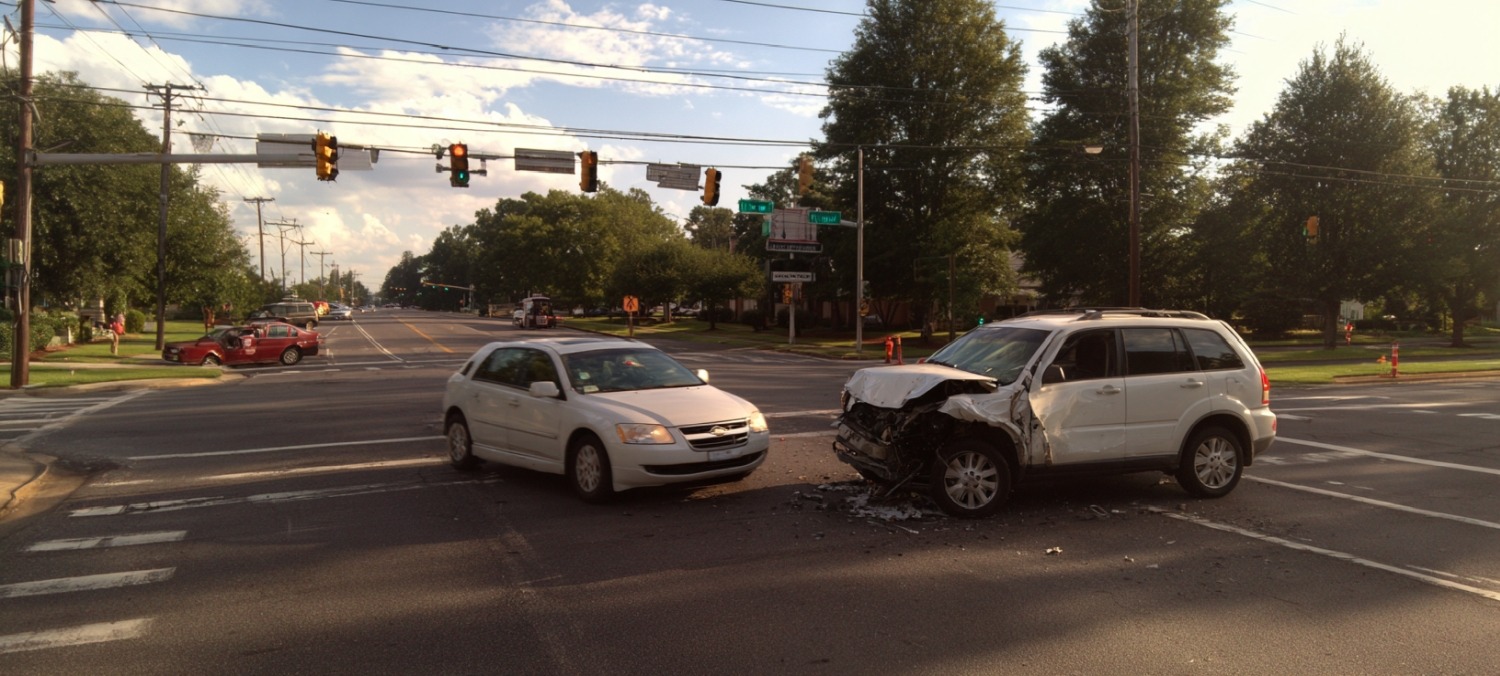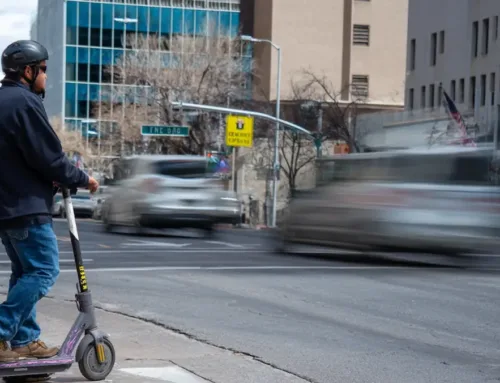The panic sets in immediately after the crash. You’re hurt, your car is damaged, and you know deep down that you were speeding a little when the accident happened. Your first terrifying thought: “Will my insurance cover this? Can I still recover anything for my injuries? Does the fact that I was speeding mean my insurance won’t help me?”
In New Mexico, being partially at fault doesn’t automatically bar you from insurance payouts. New Mexico follows what’s called “pure comparative negligence,” one of the most plaintiff-friendly systems in the United States. Even if you’re 99% responsible for your accident, you can still recover compensation for the 1% of fault that belongs to the other driver. This makes New Mexico dramatically different from many other states where being mostly at fault means you get nothing.
This legal protection exists because New Mexico courts recognized a fundamental truth: accidents rarely have just one cause, and the old “all-or-nothing” approach created devastating injustices for people who made mistakes but were still hurt by someone else’s negligence. Your car accident lawyer can talk you through the details of your crash and help you find out just what to expect in terms of fault, recovery, and how long a case might take. If you have been hurt in a crash that is partially at fault, or if the police have cited you in a crash where you were hurt, you should call Roadrunner Law Firm today.

How New Mexico’s Pure Comparative Negligence Works
New Mexico’s comparative negligence law emerged from a landmark 1981 case called Scott v. Rizzo, where the state’s highest courts made a deliberate choice to adopt the fairest possible system for accident victims. The court examined how other states handled shared fault and concluded that New Mexico should embrace “pure” comparative negligence rather than the “modified” systems used elsewhere.
Under pure comparative negligence, your recovery gets reduced by your percentage of fault, but you’re never completely barred from compensation unless you’re 100% responsible. This means the legal system focuses on the harm caused by each party’s actions rather than making arbitrary cutoffs that leave seriously injured people with nothing.
The practical impact is profound. In states with “50% rules,” if you’re found 51% at fault, you recover zero dollars regardless of how badly the other driver behaved. In New Mexico, if you’re 51% at fault in a $100,000 accident, you still recover $49,000. If you’re 80% at fault, you recover $20,000. The system ensures that everyone who contributed to your injuries bears proportional responsibility.
This approach particularly benefits victims of serious accidents where multiple factors combined to cause devastating injuries. Car accidents often involve split-second decisions, poor weather, inadequate road conditions, vehicle defects, and human error from multiple parties. New Mexico’s law recognizes this reality rather than forcing juries to ignore significant contributing factors.
Real-World Examples of Shared Fault Recovery
Consider Sarah, who was checking her phone while driving through an intersection when another driver ran a red light and T-boned her car. She suffered a traumatic brain injury requiring extensive medical treatment and rehabilitation. Under New Mexico law, even though Sarah’s texting contributed to the accident, she can still recover compensation for the brain injury caused by the red-light runner.
The jury might find Sarah 30% at fault for the distracted driving and the other driver 70% at fault for running the red light. If Sarah’s total damages amount to $500,000 for medical bills, lost wages, and pain and suffering, she would recover $350,000. Her own insurance would handle the property damage to her vehicle, and she’d have substantial compensation to help with her recovery.
Another example involves Michael, who was speeding on an icy road when a delivery truck failed to yield while making a left turn. Both drivers made poor decisions—Michael for driving too fast in dangerous conditions, and the truck driver for failing to yield the right of way. Even if Michael is found 75% at fault for his excessive speed, he can still recover 25% of his damages from the truck driver’s insurance.
These scenarios demonstrate why New Mexico’s approach promotes fairness over arbitrary rules. Each party bears financial responsibility proportional to their contribution to the harm, regardless of whether their negligence was slightly more or slightly less than the other party’s.
At Roadrunner Law Firm, we most often see shared fault come into play when the police cite our client for speeding or driving too fast for conditions. While that sounds like the victim was behaving badly, a lot of the time the police officer is simply wrong in their assessment of the speed or behavior of the drivers. We can prove what really happened in court with experts and witnesses, often making it clear that our client had 0% of the blame, despite what the police report said.

How Insurance Companies Handle Comparative Fault
Your own insurance company will typically cover your vehicle damage and medical expenses regardless of fault, subject to your policy limits and deductibles. This coverage operates independently from any fault determination and provides immediate protection while fault questions get resolved. But what about your injuries? That’s where the other driver’s insurance kicks in.
Insurance adjusters from both companies will investigate the accident and may reach their own conclusions about fault percentages. Guess what? The adjusters are ALWAYS going to try and blame the injured person for at least some of the accident, because then the insurance can pay less. This is a common tactic but their determinations of who is at fault and how much they are at fault aren’t binding in court! Judges and juries make the final decision about fault allocation, and skilled attorneys can present evidence that shifts these percentages significantly in your favor. Never trust the adjuster when they say who is to blame and by what percentage. Talk to your lawyer and let them speak on your behalf.
Common Misconceptions About Being At Fault
Many accident victims assume that any degree of fault eliminates their right to compensation. This misconception prevents people from seeking the legal help they need after serious accidents. The reality is that most accidents involve some degree of shared responsibility, and New Mexico law specifically accounts for this fact.
Another common misbelief is that admitting any mistakes at the accident scene automatically makes you liable for the entire incident. While you should avoid making detailed statements about fault, acknowledging obvious errors doesn’t necessarily determine the final fault allocation. Professional accident reconstruction, witness testimony, and detailed legal analysis often reveal contributing factors that weren’t immediately apparent. The truth is far more complex than what appears in those first chaotic moments after a crash.
Some people worry that pursuing a claim when they’re partially at fault will result in higher insurance premiums or legal complications. However, your premiums may increase regardless of whether you pursue a claim, and recovering additional compensation often far outweighs these concerns, especially in serious injury cases. The most dangerous misconception is that comparative negligence only applies to minor accidents—in reality, the doctrine becomes most valuable in serious crashes where substantial medical bills, lost wages, and long-term care needs create financial burdens that exceed your own insurance coverage.
Strategic Advantages of New Mexico’s System
New Mexico’s pure comparative negligence creates strategic advantages for injury victims that don’t exist in other states. Your attorney can focus on proving the other party’s negligence without having to achieve an arbitrary threshold of fault distribution. This shifts the legal strategy from defensive positioning to aggressive pursuit of all contributing factors. The psychological impact alone can be transformative for clients who previously felt hopeless about their legal options.
The system also encourages more realistic settlement negotiations. Insurance companies can’t simply argue that you were “more than 50% at fault” to avoid all liability—they must engage in meaningful discussions about the actual percentage of fault and corresponding compensation levels.
In multi-party accidents, New Mexico’s approach prevents scenarios where seriously injured victims recover nothing because their individual fault exceeded any single defendant’s fault percentage. Each negligent party bears responsibility for their proportional contribution to your injuries, regardless of how fault gets distributed among multiple defendants. The pure system also eliminates the arbitrary nature of modified comparative negligence, which the Scott v. Rizzo court described as simply shifting “the lottery aspect” of the old all-or-nothing rule. Instead of random cutoffs that bear no relationship to actual harm caused, New Mexico’s law creates predictable outcomes based on proportional responsibility.

Building Your Case Despite Partial Fault
Successfully pursuing compensation when you’re partially at fault requires thorough investigation and skilled legal advocacy. Your attorney will examine all potential contributing factors, including road conditions, vehicle defects, weather, visibility issues, traffic control devices, and the other party’s actions leading up to the accident. This comprehensive approach often surprises clients who thought their case was straightforward.
Modern accident reconstruction techniques can reveal contributing factors that weren’t obvious at the scene. Cell phone records might show the other driver was texting. Traffic camera footage could demonstrate they were speeding or failed to stop completely. Witness interviews often uncover details about aggressive driving behavior or traffic violations. Medical evidence becomes especially important in comparative negligence cases, as demonstrating the severity of your injuries and their long-term impact helps justify pursuing compensation even when you bear partial responsibility.
The discovery process in litigation can uncover evidence that dramatically shifts fault percentages. Corporate defendants might have maintenance records showing vehicle defects or training records revealing inadequate driver preparation. Government entities might have documentation of known dangerous road conditions they failed to address. These revelations frequently transform cases that initially appeared unwinnable into substantial recoveries.
What This Means for Your Recovery
New Mexico’s comparative negligence system transforms how you should think about accident cases where you made mistakes. Rather than accepting total financial responsibility for injuries caused by multiple parties, you can pursue proportional compensation that reflects everyone’s contribution to the harm. This legal protection becomes especially valuable in serious injury cases where medical bills, rehabilitation costs, and lost wages create financial hardships that extend far beyond the initial accident.
Even partial recovery can mean the difference between financial stability and devastating debt. The system also provides psychological benefits by acknowledging that accidents often result from multiple factors rather than solely blaming one party. This recognition helps injury victims focus on recovery rather than dwelling on guilt and self-blame that prevents them from seeking necessary medical care and legal protection.
For families dealing with catastrophic injuries or wrongful death cases, New Mexico’s approach ensures that all negligent parties contribute to addressing the long-term consequences of their actions—comprehensive accountability that better serves the interests of justice and provides more complete compensation for devastating losses.
Injured in an Accident Where You Share Some Fault? The experienced attorneys at Roadrunner Law Firm know how to maximize your recovery under New Mexico’s comparative negligence system. We’ll investigate all contributing factors, challenge unfair fault allocations, and fight to ensure you receive the compensation you deserve. Contact us for a comprehensive consultation about your specific situation.
This article provides general information about New Mexico comparative negligence law and should not be considered legal advice. Every accident has unique circumstances that require individual legal analysis. Consult with a qualified attorney to discuss your specific situation and potential recovery options.



